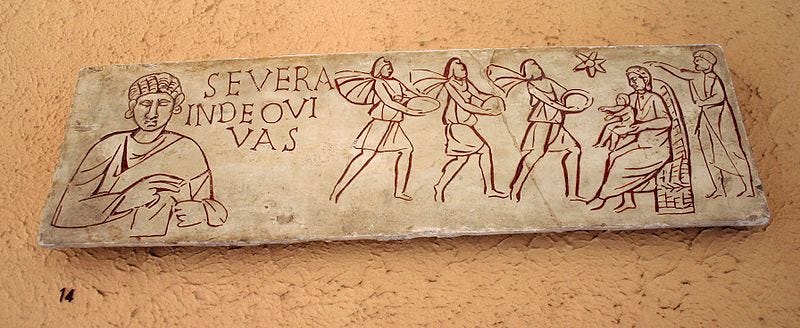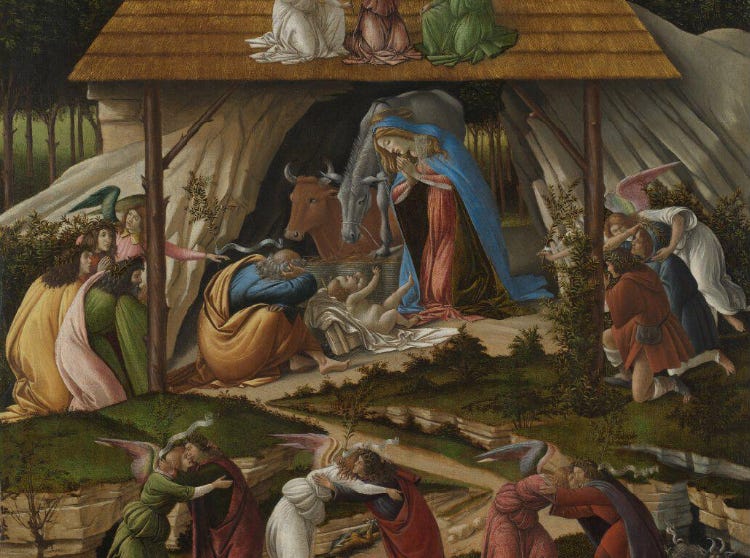…“I am the resurrection and the life. Whoever believes in me, though he die, yet shall he live, and everyone who lives and believes in me shall never die. Do you believe this?”
—Jesus, found in John 11:25-26
Barbarus hic ego sum qui non intelligor illis. (People consider me a barbarian because they do not understand me.)
—Ovid, found in Jean-Jacques Rousseau’s The Social Contract and The First and Second Discourses
When one has a duty to accomplish, one is strong enough to endure all.
— Anatole France, The Crime of Sylvestre Bonnard

From the moment humanity fell into sin hope was given, glimmered throughout history in the lives of patriarchs and prophets to revelation1.
The kudurru of King Melishipak II commemorates land gifted under the watchful gaze of celestial deities to Marduk-apal-iddina, signifying the alignment of earthly governance with divine will and authority2.

The kudurru surmounts exigencies of a legal document to actualize ontological markers ordained in vicissitudes symbolic theurgic precipitation, numinously imbued to refract the primordial essence of the mundane, unperturbed by the ravages of time.
The innate and ineffable yearning within transcendence endures world chaos, promised to ellipsis cultures and eras in facilitation of earthly restoration (Genesis 3:15), as the kudurru's divine authority interplays light and darkness, heaven and earth3.
The Mystical Nativity

Botticelli’s The Mystical Nativity is a celestial struggle between light and darkness balanced by anguished suffering (Psalm 22) and redemption (Isaiah 53).
Despite messengers being overlooked, those who seek refuge in God will find satisfaction and joy (Psalm 22:26), the ultimate redemption for those who follow Yeshua4:
Isaiah 53:5 directly ties the suffering of the Messiah to the redemption and healing of humanity;
John 19:30, Jesus' declaration on the cross signifies the completion of redemptive salvation necessitated via suffering and death;
Hebrews 12:2 highlights that Jesus endured suffering for the ultimate joy and reward, paving a way for all believers who follow to eternal satisfaction and salvation;
1 Peter 2:24, through Christ's suffering, believers effectuate liberation from spiritual bondage (σωτηρία, sōtēria, meaning "salvation" or "spiritual healing") and the righteous restoration of reconciliation with God (the experience of ἀπολύτρωσις, apólutrosis, meaning "redemption") from sin.
Attributed in the Bezae Codex to Jesus on the cross (Matthew 27:46), even David remembers God’s faithfulness in Psalms (v. 3-5), as enemies mock (v. 8) and cast lots (v. 18), paralleled in Matthew 27:35, and I perceive the narrative of the Messiah not as senseless tribulations but as an ontological reconfiguration of suffering into a metaphysical truth: suffering and sacrifice are far from being an end but sacred, wherein the very crucible of redemption’s light is forged.
Ἀναστὴθι ὥσπερ φως, ἀνθρώπινον οὐρανίαιον! (Rise as light, human yet heavenly!)
In Matthew, Judas’ betrayal (Matt. 26:14-16) and Jesus’ anguished prayer (Matt. 26:36-46) speak to the depth of human suffering5.
It is through our deepest pain that new life and consciousness emerge, a paradigmatic parousia the Book of Acts Great Commission serves, wherein the crucifixion and resurrection of Jesus are not contingent events but theological architecture of divine providence, expounded by Peter’s apotheosis in his Pentecost homily (Acts 2:22-36) through Paul’s justificatio ex fide (Acts 13:26-39).
These soteriological realities find absolution wrought in Stephen’s vicarious atonement (Acts 7), where existential exigencies of faith delineate ecclesial testament affirmed to essential fortitude central in divine grace’s martyria, for theological ontology is a proclaimed participatory union in temporal certitude exalted by the Lamb’s transfigured tribulation, central to a sacramental glorification over dialectic sin and death:
Elpis (Greek: ἐλπίς) is the confident hope denoted in assured expectation grounded not in subjective optimism but in the objective, divine promises revealed in eschatological and theological virtue, rooted in the unchanging faithfulness of God for future glory and consummation (Romans 8:24-25; cf. Titus 2:13)
Sympatheia (Greek: συμπάθεια), particularly within the context of Christ’s incarnation and vicarious identification with humanity’s affliction, refers to a theological reality of shared suffering and empathy not merely passive but active, via the kerygma of the Incarnation and the soteriological significance of the Passion (Hebrews 2:17-18; cf. Matt. 9:36 and Luke 7:13)
Leitourgia (Greek: λειτουργία) is Christian’s ecclesial acts of service or ministry performed for the edification of the Church and the glorification of God (Romans 12:1; cf. 1 Peter 2:5)
Within the hermeneutic tribulation emerges soteriological fulfillment revealed in salvific purpose, where apostolic proclamation is not merely a mandate but a shared communal responsibility to disseminate agape far from the solipsistic treasure of kenosis.
How might our own tribulations illuminate salvations path within the grand narrative of redemption?
The term revelation (Latin revelatio and Greek ἀποκάλυψις (apokalypsis)) signifies God's self-disclosure, from the Sinai theophany (Exodus 19) to the visions of John (Revelation 1:1), intertwining divine communication, historical events, and mystical interpretations.
Shamash (Šamaš), Sin (Sîn or Nanna), and Inanna (Ishtar) were central deities in Mesopotamian religion, embodying justice, time, and dualities of love and war.
I reinterpret them as archetypes of the sefirot:
Shamash/Gevurah (justice) parallels the Judaic image of God as judge (e.g., Psalm 19:1-6; cf. Code of Hammurabi)
Sin/Yesod (foundation) connects Jewish calendar traditions governing lunar cycles (Exodus 12:2)
Inanna/Netzach (eternity’s duality) renders God’s multifaceted roles as redeemer and husband (Isaiah 54:5)
Genesis 3:15, known as the protoevangelium (first gospel), introduces the redemptive promise after humanity’s fall into sin, with enmity declared between the serpent and the woman's offspring (imagery of the alchemical ouroboros in Chrysopoeia of Cleopatra).
Early theologians like Augustine (City of God, 14.11) identifies the serpent as Satan and the offspring as Christ to inaugurate salvation history, while Irenaeus (Adversus Haereses, 3.23) interpreted this as Christ’s ultimate victory over evil.

The name Yeshua is the original Hebrew/Aramaic name for Jesus.
It is a shortened form of Yehoshua, (יְהוֹשֻׁעַ), meaning "Yahweh is salvation" or "The Lord is salvation,” found in the Hebrew Bible (e.g., Joshua), a combination of Yehovah (יְהוָה), meaning "the Lord," and Yasha (יָשַׁע), meaning "to save" or "to deliver."
By the first century, Yeshua was a common name in Jewish communities, particularly in Judea where Aramaic was spoken alongside Hebrew.
When the New Testament was written in Greek, the Hebrew name Yeshua was transliterated into Ἰησοῦς (Iēsous), as Greek lacked the "sh" sound and had different grammatical structures, carried further into Latin as Iesus, as the Latin alphabet later introduced the letter "J," which replaced the Greek "I."
Historical texts such as the Dead Sea Scrolls (4Q372), the Aleppo Codex (The Book of Joshua), writings by Josephus (Antiquities of the Jews (Book 20, Chp.9) and The Jewish War (Book 7, Chp.11), and the Septuagint mention individuals named Yeshua/Yehoshua, further confirming its common usage in 1st to 3rd century C.E..
Whether as Yeshua or Jesus, the name signifies the Logos incarnatus, whose kenotic self-emptying effectuates divine deliverance, soteriological fulfillment of messianic prophecy, and ontological actualization of salvation, advancing the redemptive restoration of humanity through incarnational embodiment of hermeneutical sovereignty within a birth, death, and resurrection that constitutes the salvific veracity of God central to Christian theological and ontological reconciliation.
Pain seems to transcend individual experience, interconnected through the quantum fabric of the universe, suggested in the consciousness of Orchestrated Objective Reduction (Orch-OR).
In the crucifixion of Christ suffering cascades into entropic chaos.
Yet, from this disorder new patterns arise as seeds of resurrected destruction to cyclical creation, an emergence of infinite fractals within the collapse of chaos itself, where subtle shifts in condition catalyze transformative change (butterflies) bifurcated in the neuronal response of Mary Magdalene as a timeless soteriological gesture (e.g., Madonna, Pietà, Theotokos, immaculata conceptio clare, Madonna della Misericordia, Η Προσκύνηση των Μάγων (L'Adorazione dei Magi), etc.).

